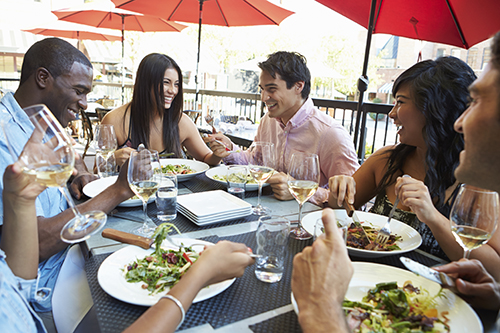Can Eating Communally Positively Impact Events?
When we think about food at conferences, most of the talk is about logistics: How do I serve 500 people while the keynote speaker is talking? How many drink tickets can we afford to give away for free before charging? What meat will most of our attendees eat?
Don’t get me wrong, this type of problem-solving is vital. If you can’t feed your attendees, you’ll have riots in the ballroom. But here’s the thing: We see meals as part of the structure, not the content of the meeting, in other words, what happens when attendees aren’t learning. I believe that the meals are where much of the learning takes place. Sometimes more than in the sessions.
Maybe it’s the vulnerability of putting food in your mouth in company, or the way chewing and swallowing slows down conversations and allows one person to talk at a time, or the good feelings that come from an increase of blood sugar. Whatever the reason, I have noticed at the hundreds of meetings I’ve organized that something magical happens when the food is served. Relationships strengthen. Deals get made. And attendees who have taken in a lot of information during the breakout sessions finally have a chance to “chew” it over and synthesize it.
Food is a powerful connector. We event planners, as well as HR managers, could use communal dining much more strategically to engage employees and galvanize teams.
And food has a powerful effect on the memory. It engages all the senses, leaving an imprint that can last a lifetime. Who doesn’t remember the smells of their grandmother’s kitchen, or the taste of a childhood birthday cake? How can we harness the power of taste and smell to improve learning outcomes and job satisfaction?



